In Milan, Rooms Studio examines Georgia’s shifting social landscape
Expandable tables that reference recent government protests and lamps held together with ‘chewing gum’ feature in the Tbilisi-based studio’s Milan Design Week 2025 installation
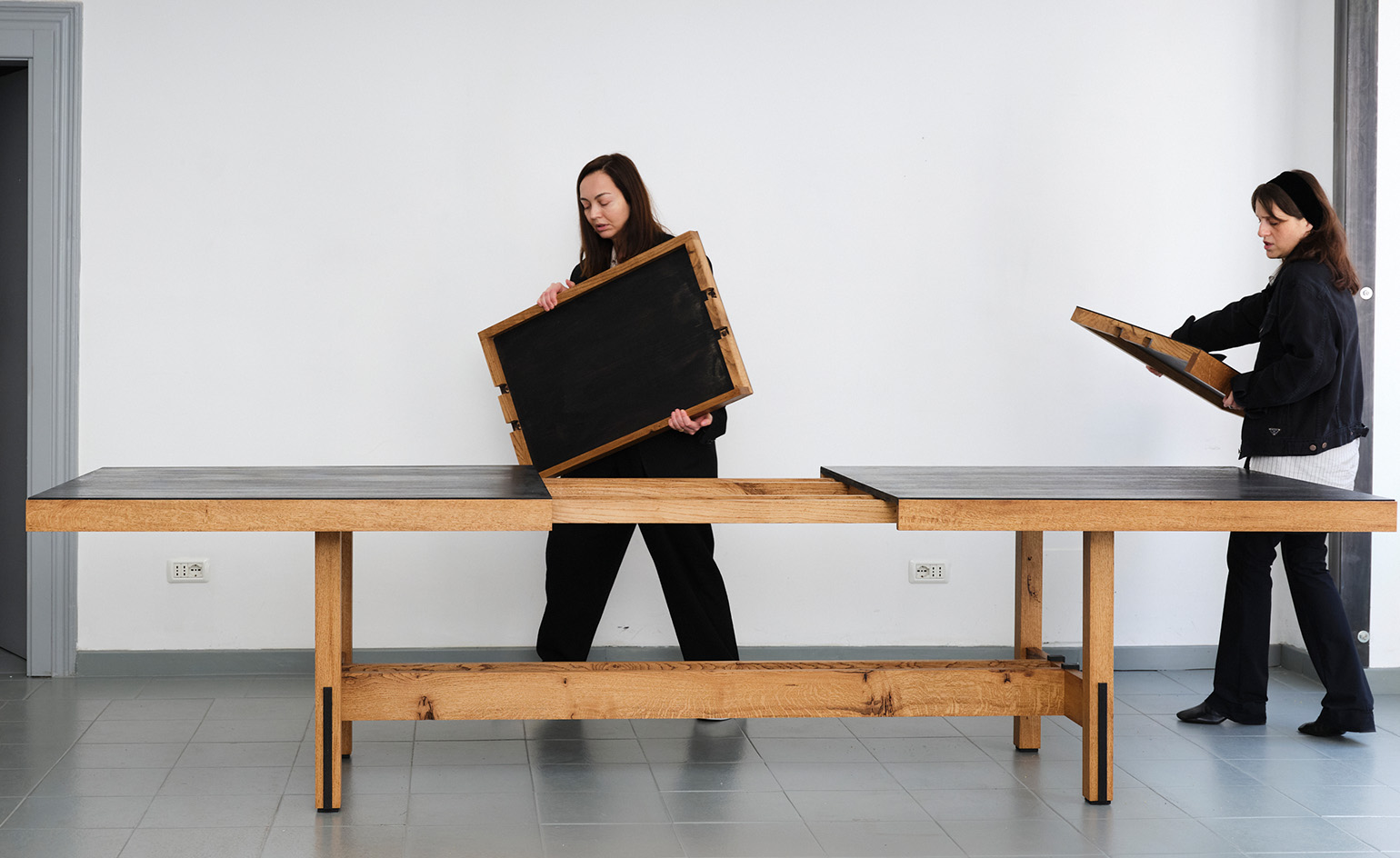
Georgia is a country with a complicated modern history. Straddling East and West, this mountainous and somewhat isolated part of the Caucasus has recently endured further upheaval by the election of a new government that wants to realign with Russia, and move away from the EU. The Tbilisi-based duo Rooms Studio have long used their country’s unique cultural identity and current events as a driving narrative in their work, incorporating and elevating Georgian craft, traditions, and day-to-day life into all of their projects.
Now, designers Keti Toloraia and Nata Janberidze are increasingly concerned for the future of their homeland. ‘We’ve been very touched with the protests going on in Georgia, in Tbilisi, and we also took part,’ Janberidze explains. ‘We care a lot about our country.’
Rooms Studio presents Sub-currents (At work) during Salone del Mobile 2025
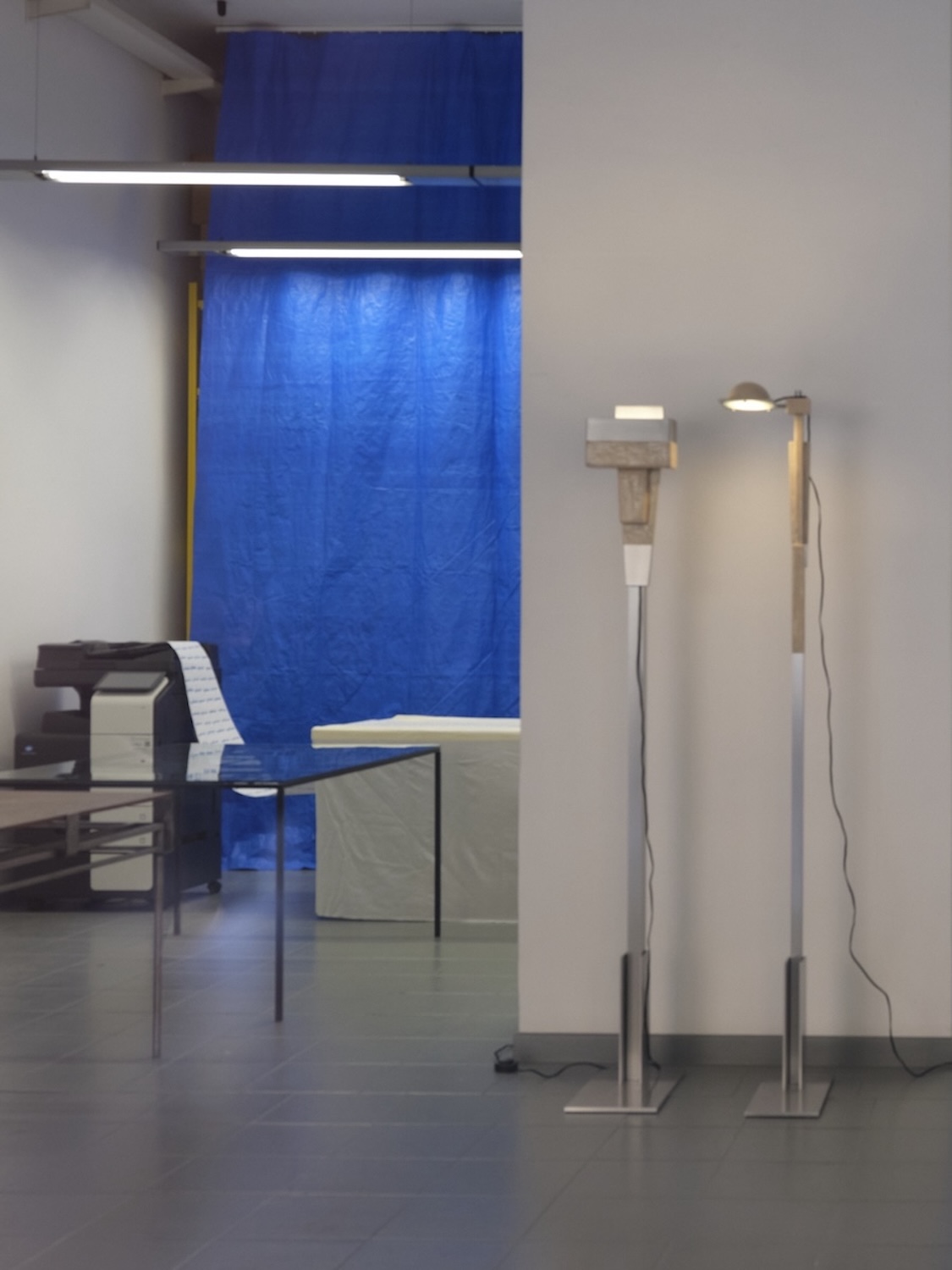
‘Re-assembled’ floor lamps are wrapped in pink silicone that resembles chewing gum
These protests against the newly inaugurated Georgian Dream party's anti-EU rhetoric form the political sub-current that threads together and lends its name to Rooms Studio’s latest exhibition. ‘Sub-currents (At work)’ is a solo presentation hosted by Studio Frey Barth during Milan Design Week 2025, and includes several new works by the studio. Among them is a series of expandable or interactive tables that represent those used traditionally by Georgian families for Supra celebrations, and which were also used as part of an act of solidarity along the main avenue in Tbilisi this past New Year.
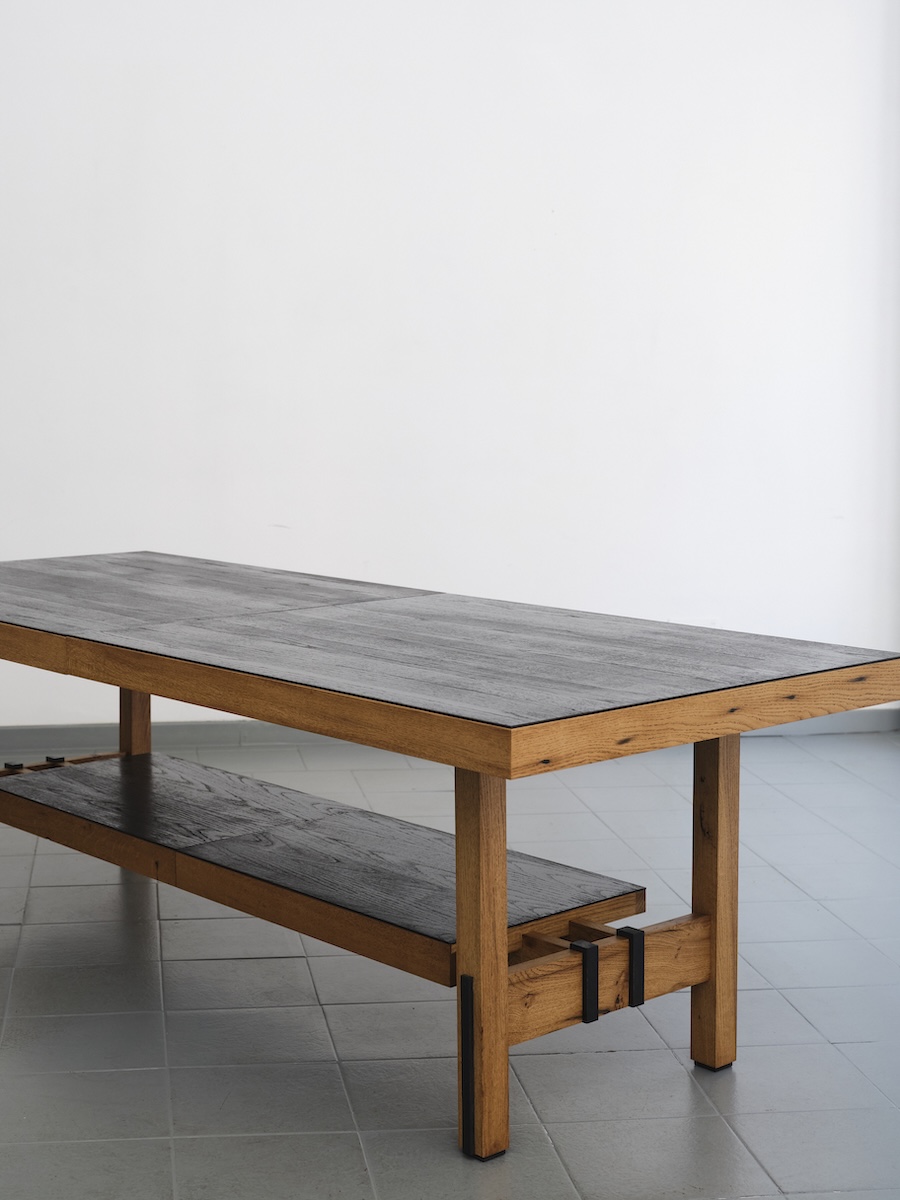
The ‘N1’ table is made reclaimed oak and can be expanded with additional leaves
‘There was a very inspiring night during the New Year celebrations this year when people sat and gathered at tables joined to reach a kilometre in length,’ says Janberidze. ‘During Supra, people gather for the feast and they have dinner together. But these tables say more than “dinner”. They’re more symbolic.’ Supras are usually led by men, but these tables – designed by two women – purposefully exude feminine qualities through their design.
The most physically substantial of the three new tables, the ‘N1’, is crafted from reclaimed oak from demolished houses. ‘We always use that material in our works,’ says Janberidze. ‘It's a part of our practice.’ The table’s blackened-top leaves slide open from the centre, and two additional pieces stored on its base frame can be added into the gap, turning it from a ten to a 14-person table.
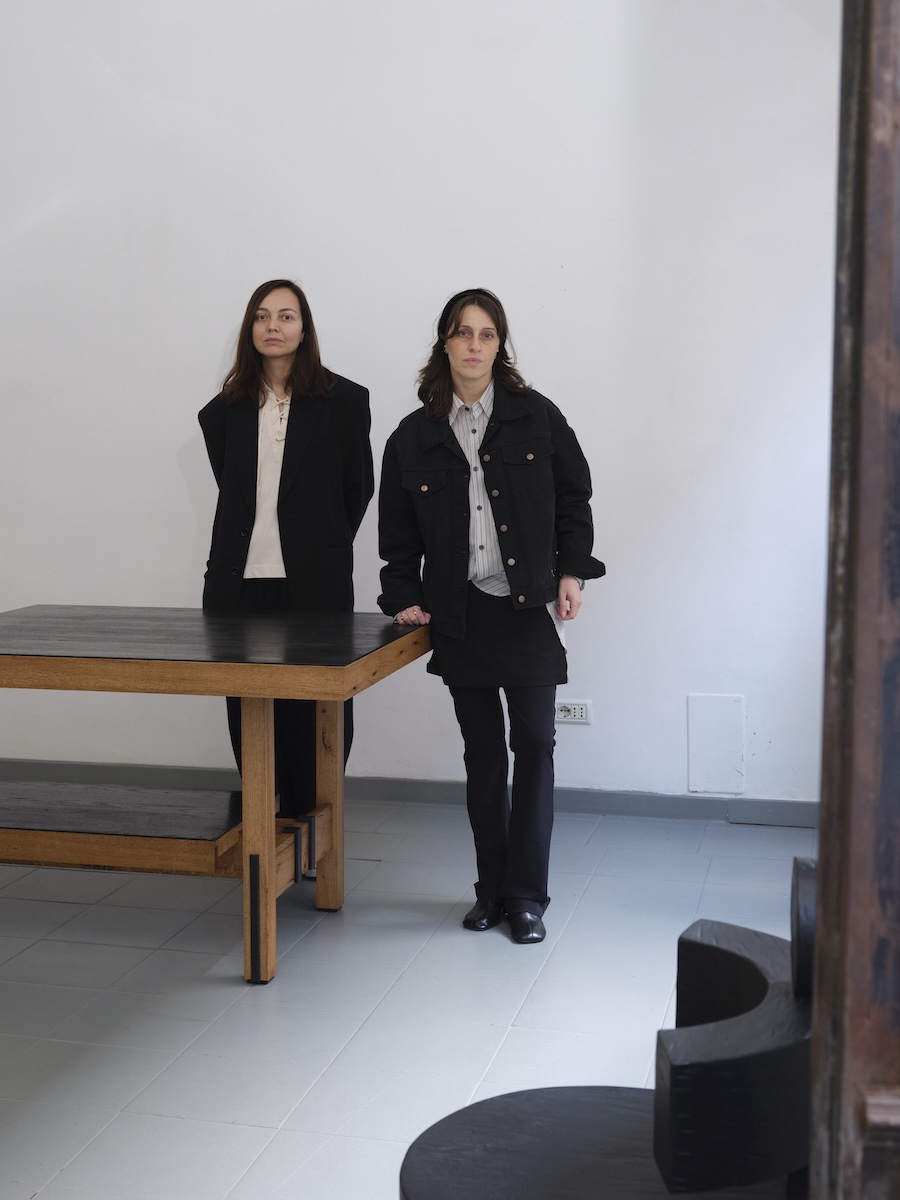
Keti Toloraia and Nata Janberidze of Rooms Studio, Milan Design Week 2025
More slender in form, the ‘N2’ features an industrial-style brushed steel frame topped with plywood that’s finished in oak veneer. One table tucks neatly under the other, but can be rolled out on casters when needed to expand the design from an eight to a 12-seater. Meanwhile, the ‘N3’ has a top surface comprising square modules that are each wrapped in white cloth fabric.
These squares pop out so that the fabric can be replaced or swapped for another, to create a quilted effect if desired, or an alternative material like glass or stone. ‘It can be even replaced with some ceramic tiles,’ Janberidze suggests. Rooms Studio’s metal and glass ‘Simple Armoured Table’ from 2018, and the blackened steel ‘Alchemy Table’ from 2017 also feature in the installation.
Wallpaper* Newsletter
Receive our daily digest of inspiration, escapism and design stories from around the world direct to your inbox.
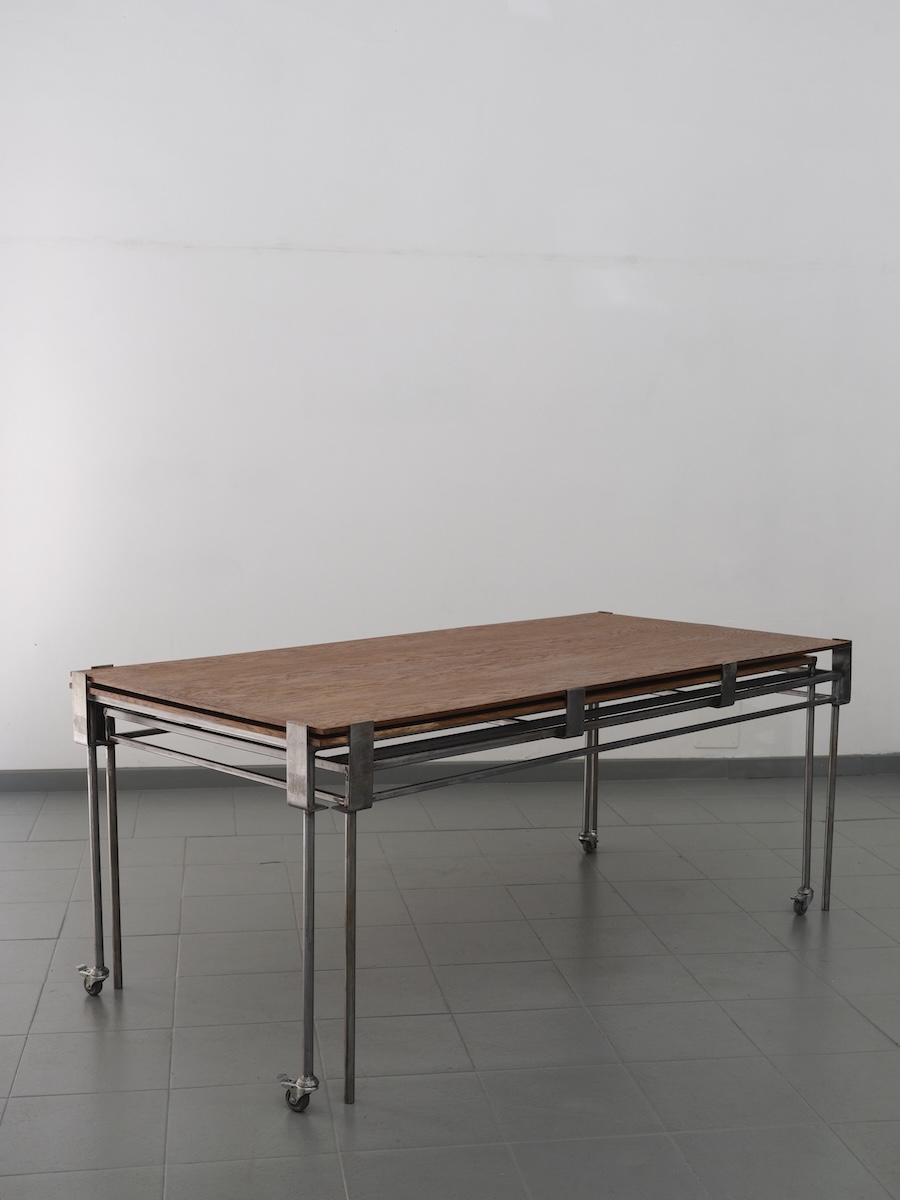
‘Sub-currents (At work)’ by Room Studio, Milan Design Week 2025
At the back of the exhibition space is another long table, covered with a continuous ream of paper that appears to have been ejected from an office-grade printer. It’s length is scrawled repeatedly with the word ‘ადამიანის’ – or adamiani – which means ‘human’ in Georgian and is derived from the biblical name Adam. It is written in the Mkhedruli script at the beginning of the paper, then slowly becomes abstracted further along until it resembles a list of signatures on a petition. ‘It's like a mantra, and is symbolic to the same protests,’ Janberidze describes. ‘It's very important that each human's voice is heard, and it’s also like a signature.’
Rooms Studio has also extended its Streets Series collection – influenced by the ingenuity of Georgians who make furniture for themselves from the materials at hand – with a pair of floor lamps that appear to be assembled from found parts and stuck together with chewing gum. ‘We were inspired by the workers at the construction site of one of our interior design projects, who made lights for themselves out of torches and sticks,’ says Janberidze.
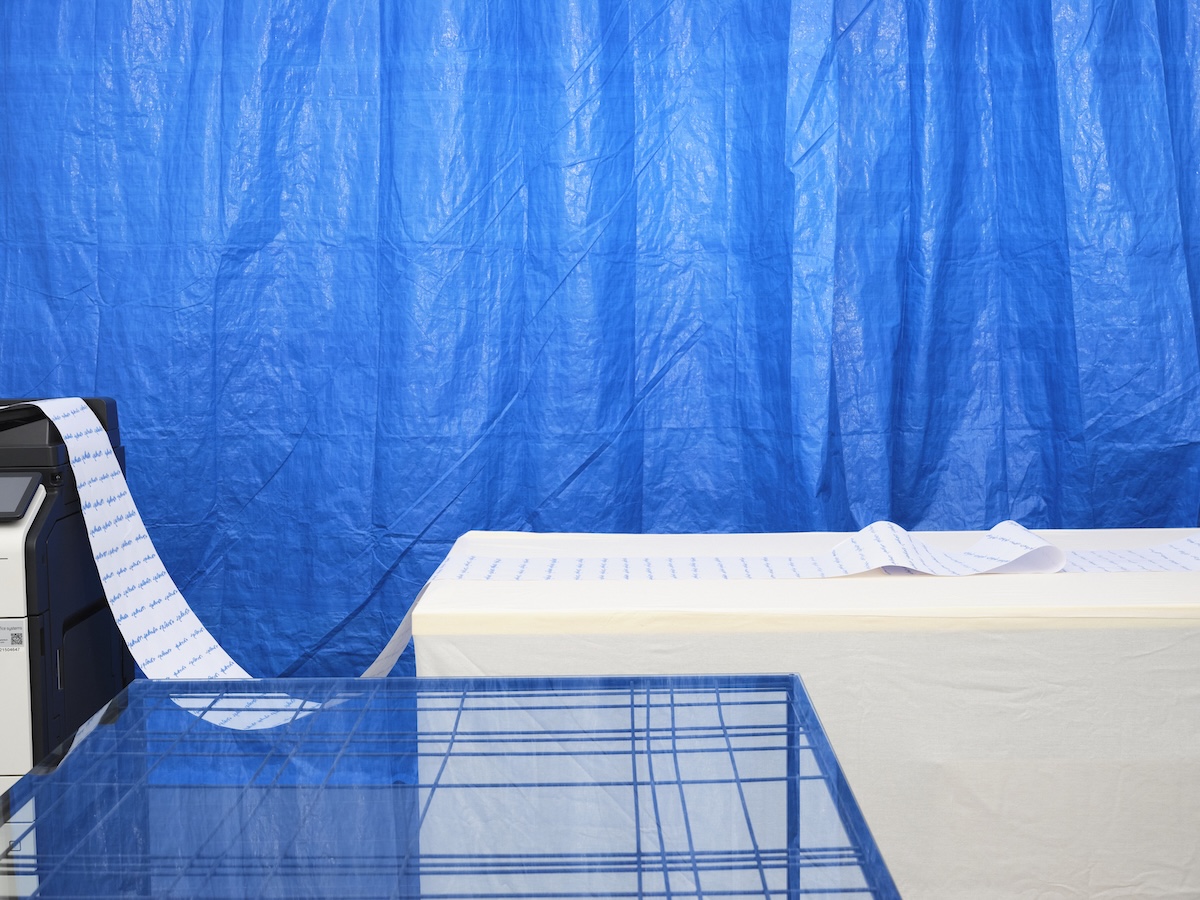
A long scroll of paper is repeatedly scrawled with the Georgian word for ‘human’
The ‘gum’ is actual pink silicone, which is wrapped around the major joints of the brushed aluminium components that form the ‘Re-Assembled’ lamps. The designs speak to both the resourcefulness of a people, and the reconstruction of a country that’s been pulled apart and pieced back together many times in recent history.
Finally, a set of ceramic vessels joins the studio’s ‘Wild Minimalism’ collection for Bitossi Ceramiche. Ceramics are one of the oldest traditions in Georgia, which is also considered the birthplace of wine, so these reinterpretations of historic vessels coated in a dark-blue-black hue recall the country’s role in antiquity, and form a dialogue with the past. Each of the four vessels stands on a black-lacquered podium, which the duo crafted individually to add a more linear, geometric counterpart to the curvaceous forms sat atop. ‘They stand like shadows to our retrospective of work,’ Janberidze muses.
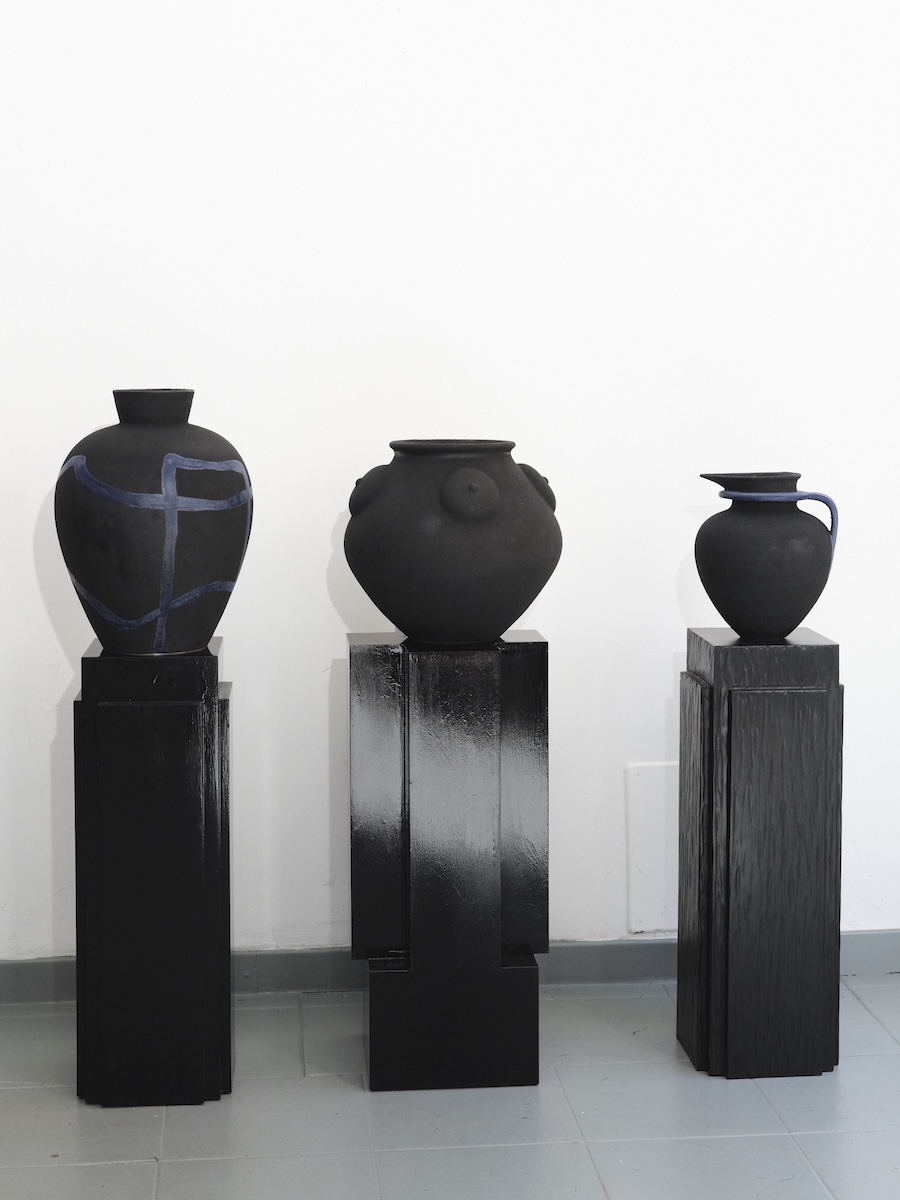
‘Sub-currents (At work)’ by Room Studio, Milan Design Week 2025
The sub-currents that connect all of these starkly different pieces offer an overview of a country in a fragile state and facing turbulent times, and represent how the designers themselves are reacting to this.
‘They all have a message and a meaning that's really honest about how we feel inside, and what we want to say and express,’ says Janberidze. ‘So it's natural to translate it into our design work.’ And at a time when much of the world is facing political uncertainty, this installation stands as an example to other designers and creatives who want to channel their anger or anxiety into their work, and make a statement both through beauty and utility.
‘Sub-currents (At work)’ is on view at Via Kramer 32, Milan 20129 until April 12th, 2025
Read about more of the fair's must-sees in our Milan Design Week 2025 guide

‘Re-assembled’ floor lamps by Rooms Studio, Milan Design Week 2025
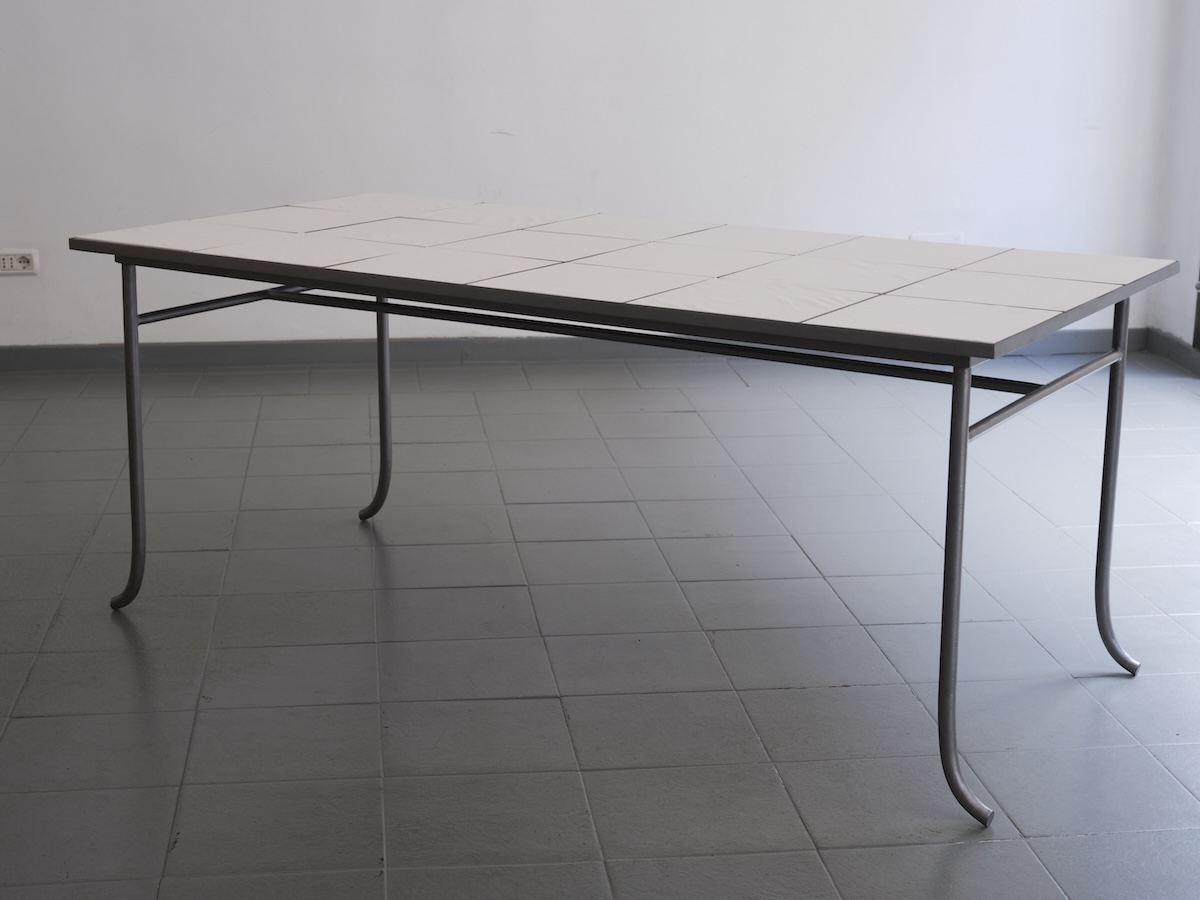
‘Sub-currents (At work)’ by Rooms Studio, Milan Design Week 2025
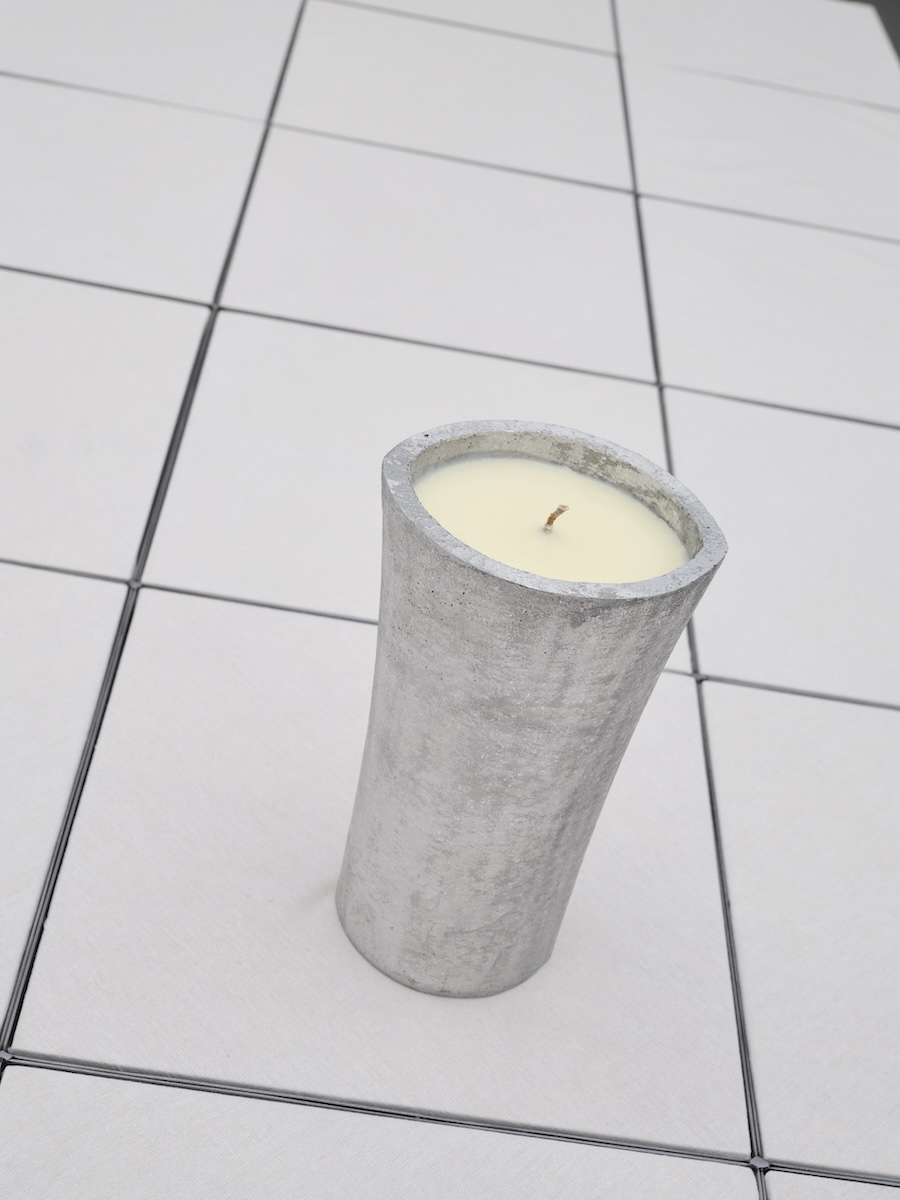
‘Sub-currents (At work)’ by Rooms Studio, Milan Design Week 2025
Dan Howarth is a British design and lifestyle writer, editor, and consultant based in New York City. He works as an editorial, branding, and communications advisor for creative companies, with past and current clients including Kelly Wearstler, Condé Nast, and BMW Group, and he regularly writes for titles including Architectural Digest, Interior Design, Sight Unseen, and Dezeen, where he previously oversaw the online magazine’s U.S. operations. Dan has contributed to design books The House of Glam (Gestalten, 2019), Carpenters Workshop Gallery (Rizzoli, 2018), and Magdalena Keck: Pied-À-Terre (Glitterati, 2017). His writing has also featured in publications such as Departures, Farfetch, FastCompany, The Independent, and Cultured, and he curated a digital exhibition for Google Cultural Institute in 2017.
-
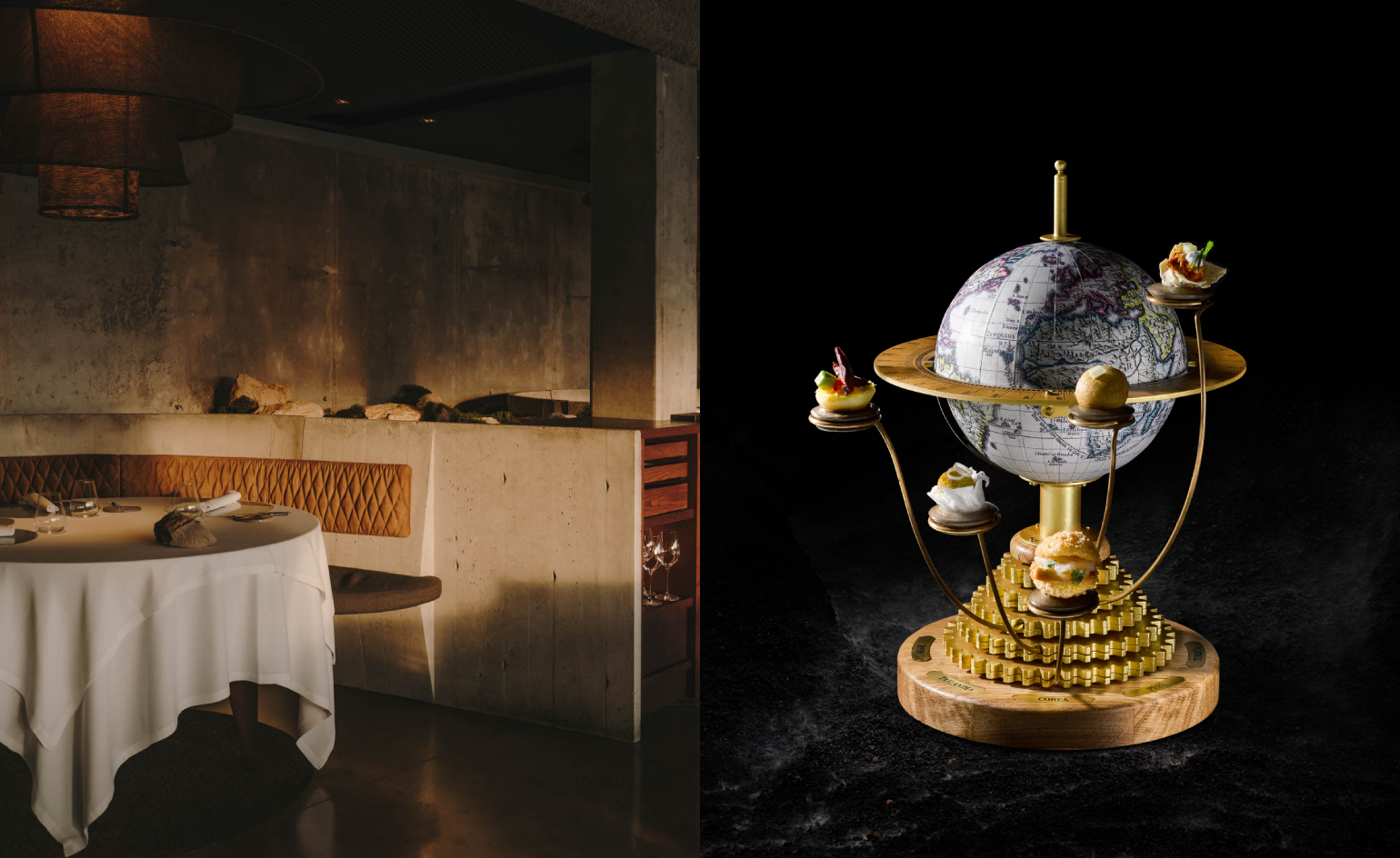 Esperit Roca is a restaurant of delicious brutalism and six-course desserts
Esperit Roca is a restaurant of delicious brutalism and six-course dessertsIn Girona, the Roca brothers dish up daring, sensory cuisine amid a 19th-century fortress reimagined by Andreu Carulla Studio
By Agnish Ray Published
-
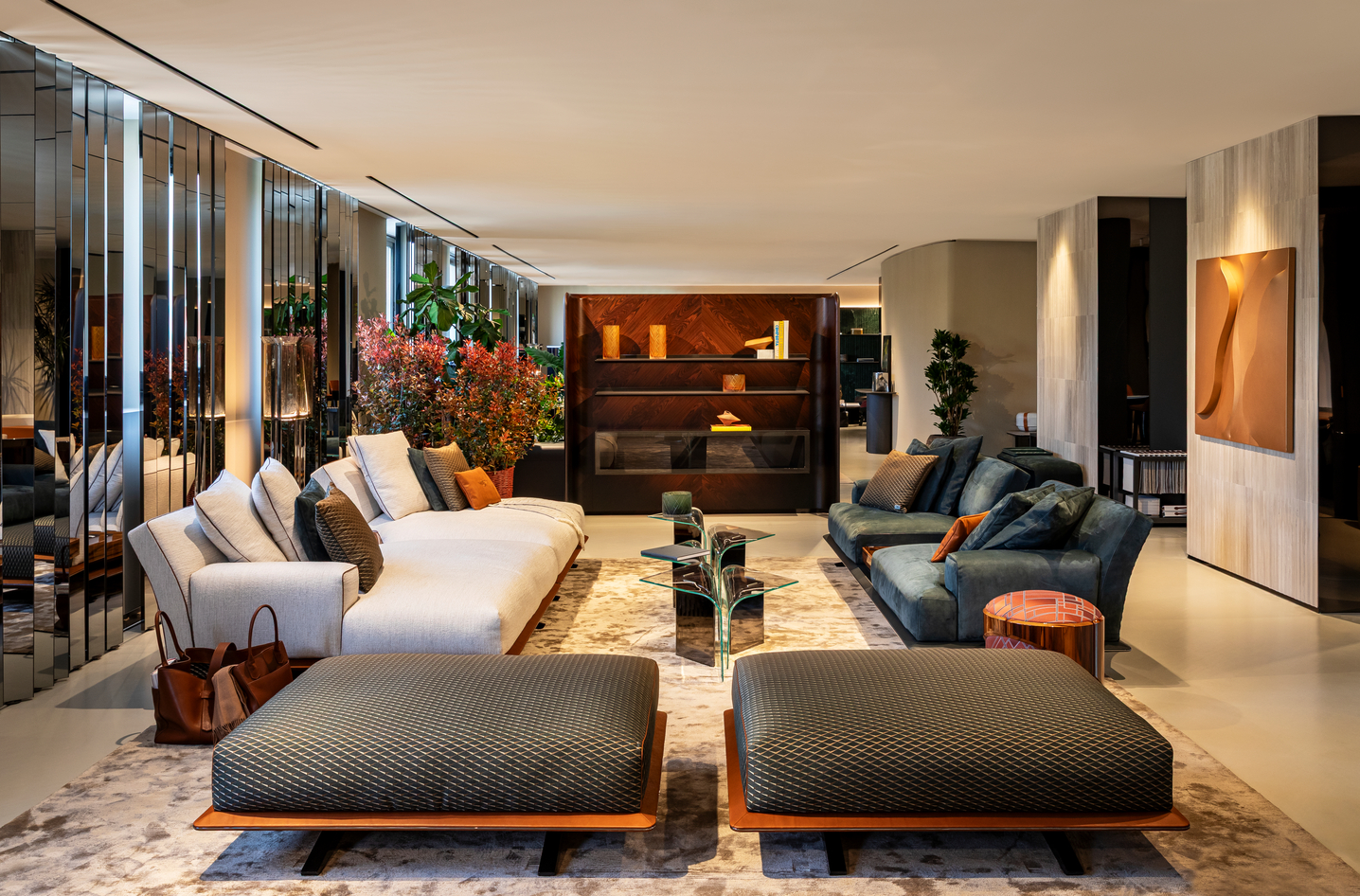 Bentley’s new home collections bring the ‘potency’ of its cars to Milan Design Week
Bentley’s new home collections bring the ‘potency’ of its cars to Milan Design WeekNew furniture, accessories and picnic pieces from Bentley Home take cues from the bold lines and smooth curves of Bentley Motors
By Anna Solomon Published
-
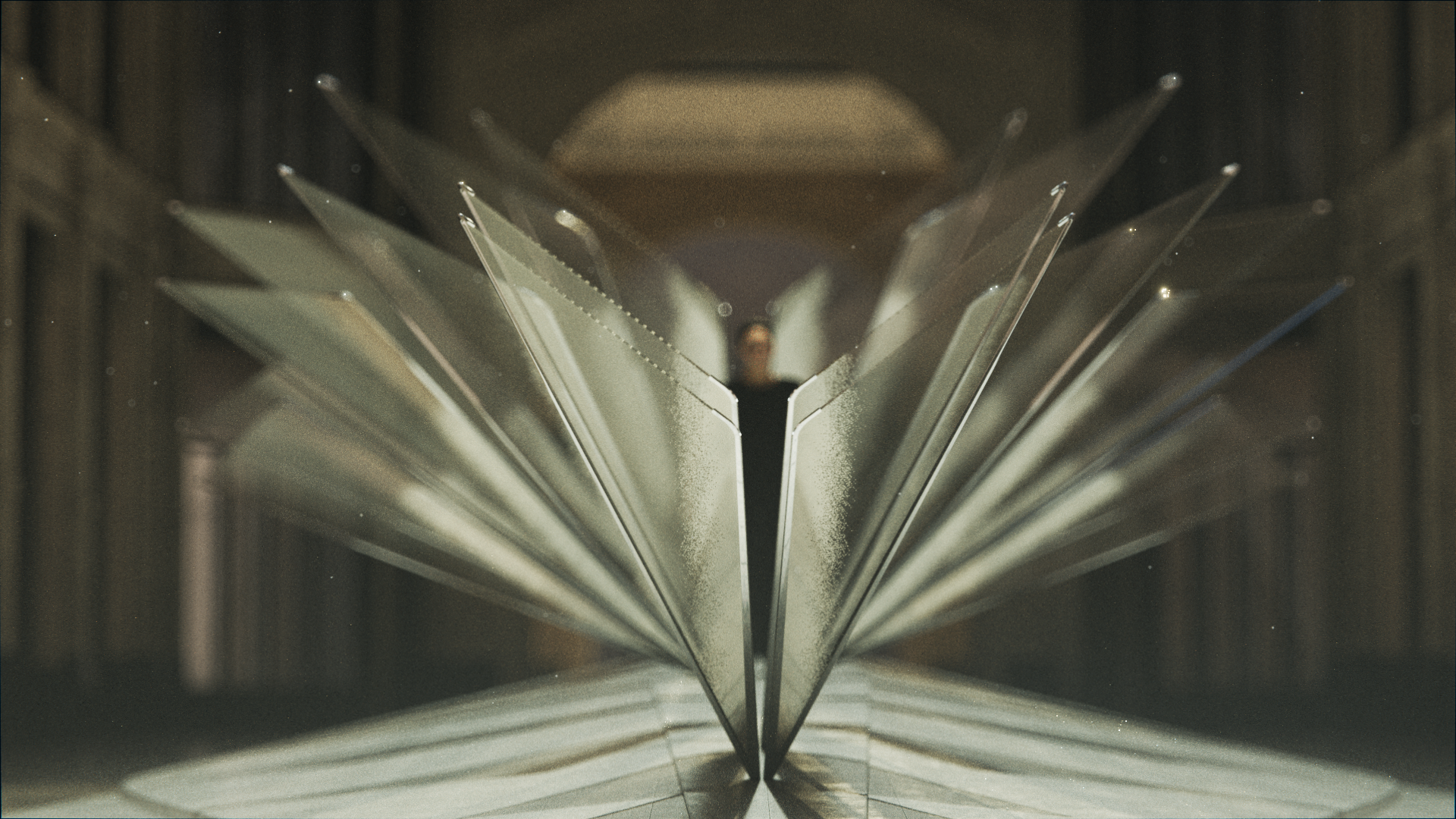 Asus chose Milan Design Week as the springboard for its new high-end Zenbooks
Asus chose Milan Design Week as the springboard for its new high-end ZenbooksMilan Design Week 2025 saw Asus collaborate with Studio INI to shape an installation honouring the slimline new Zenbook Ceraluminum Signature Edition laptop series
By Craig McLean Published
-
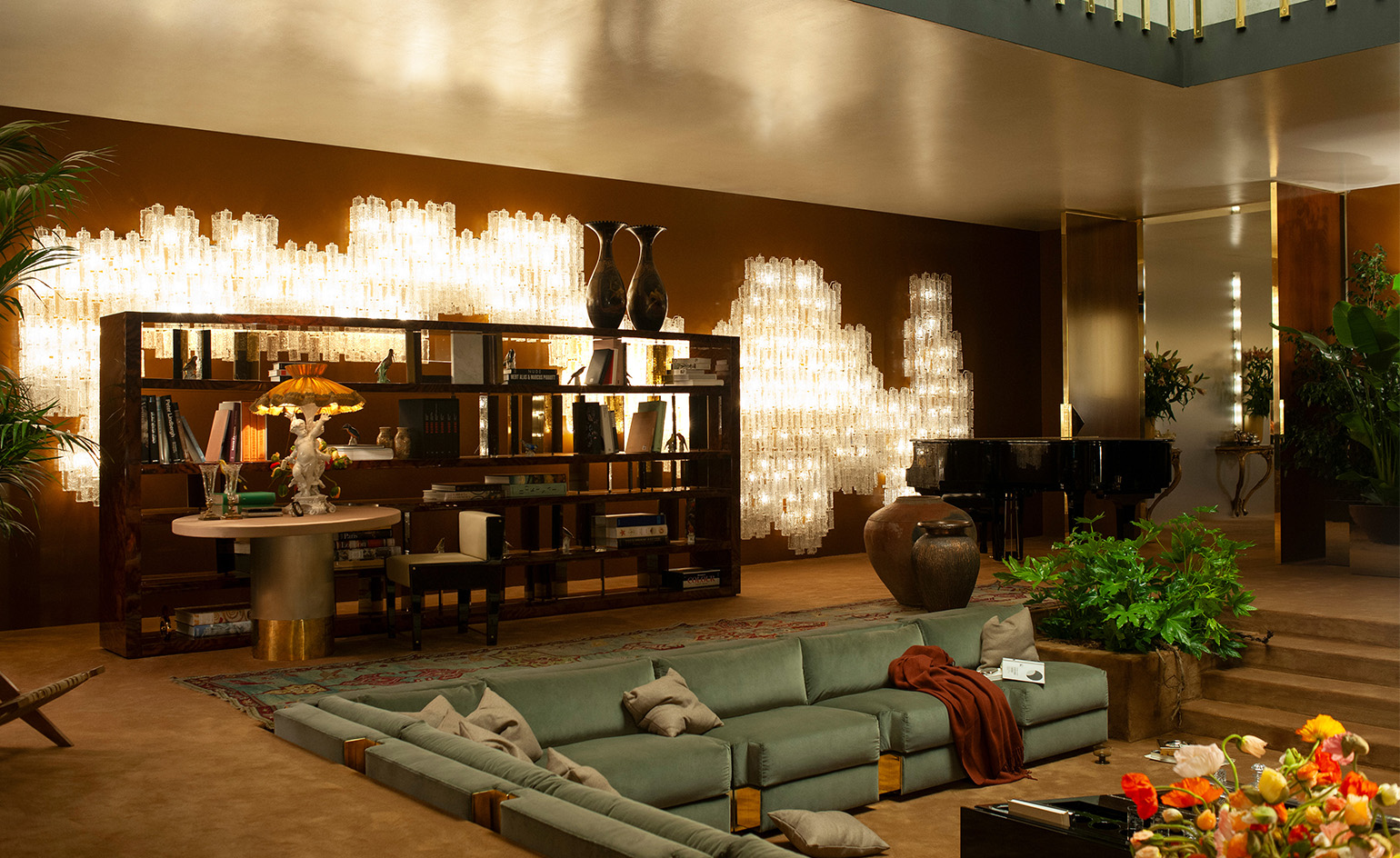 Dimoremilano and Loro Piana channel 1970s cinema in decadent Milan display
Dimoremilano and Loro Piana channel 1970s cinema in decadent Milan displayAt Milan Design Week 2025, Dimorestudio has directed and staged an immersive, film-inspired installation to present new furniture and decor for Loro Piana
By Dan Howarth Published
-
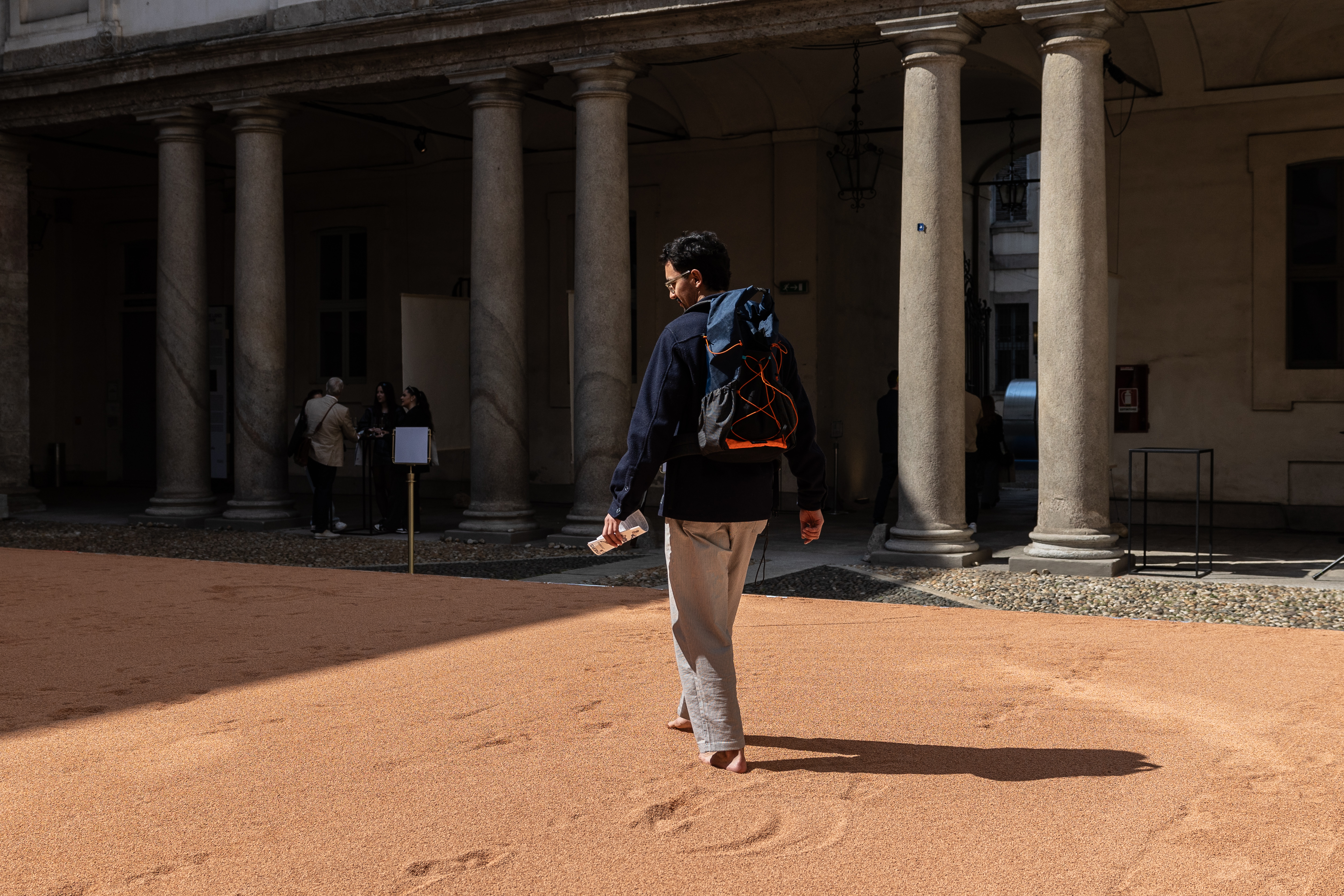 In Milan, MoscaPartners presents a poetic exploration of ‘migration’
In Milan, MoscaPartners presents a poetic exploration of ‘migration’Alongside immersive work by Byoung Cho, MoscaPartners’ Milan Design Week 2025 display features an accessible exhibition path designed for visually impaired visitors
By Cristina Kiran Piotti Published
-
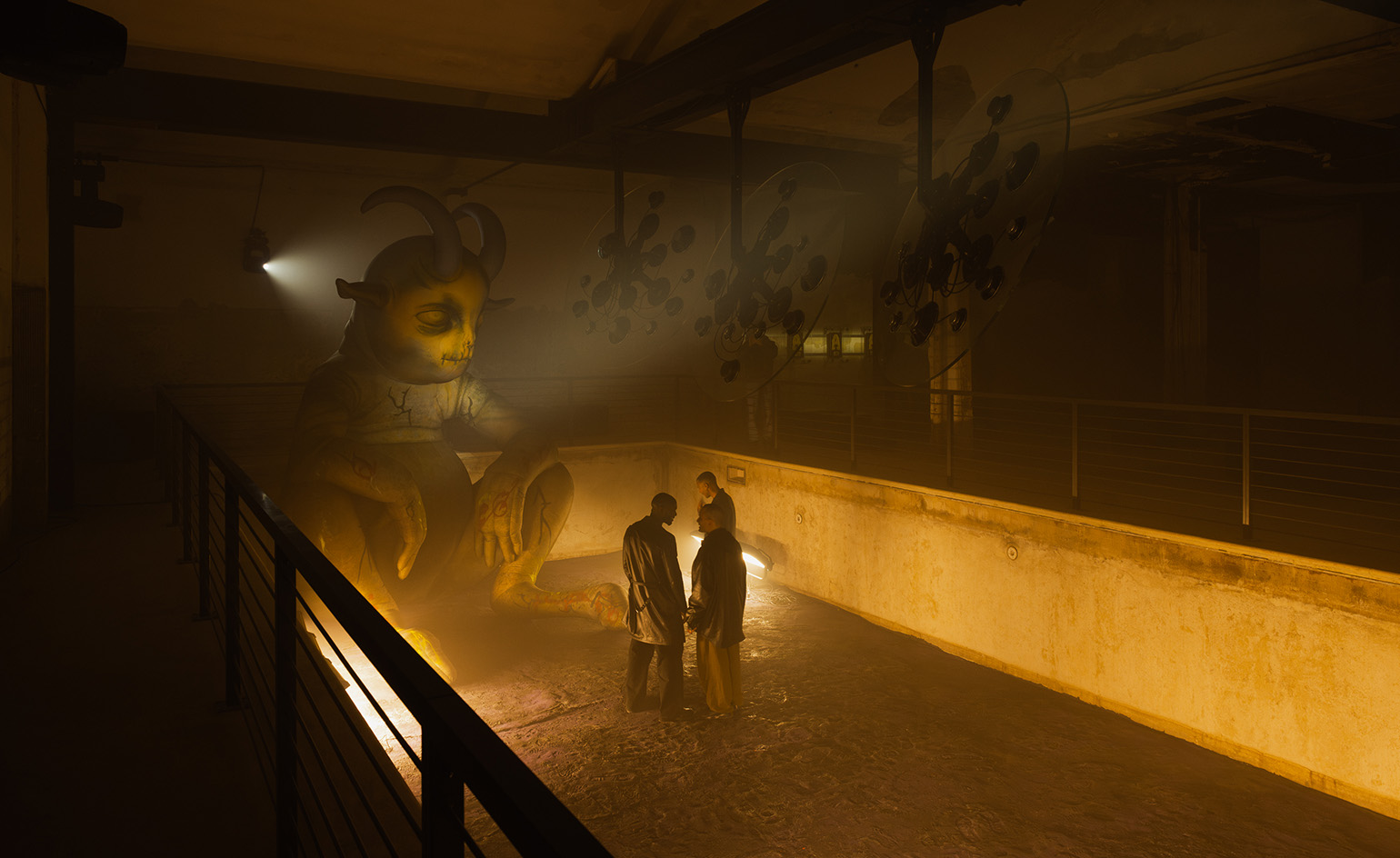 The making of PAN and Nike’s euphoric, club-inspired collaboration at Milan Design Week
The making of PAN and Nike’s euphoric, club-inspired collaboration at Milan Design WeekAlongside a new Air Max 180 release, ‘The Suspended Hour’ display sees Berlin record label PAN imagine the unfolding of a club night, from dusk until dawn
By Craig McLean Published
-
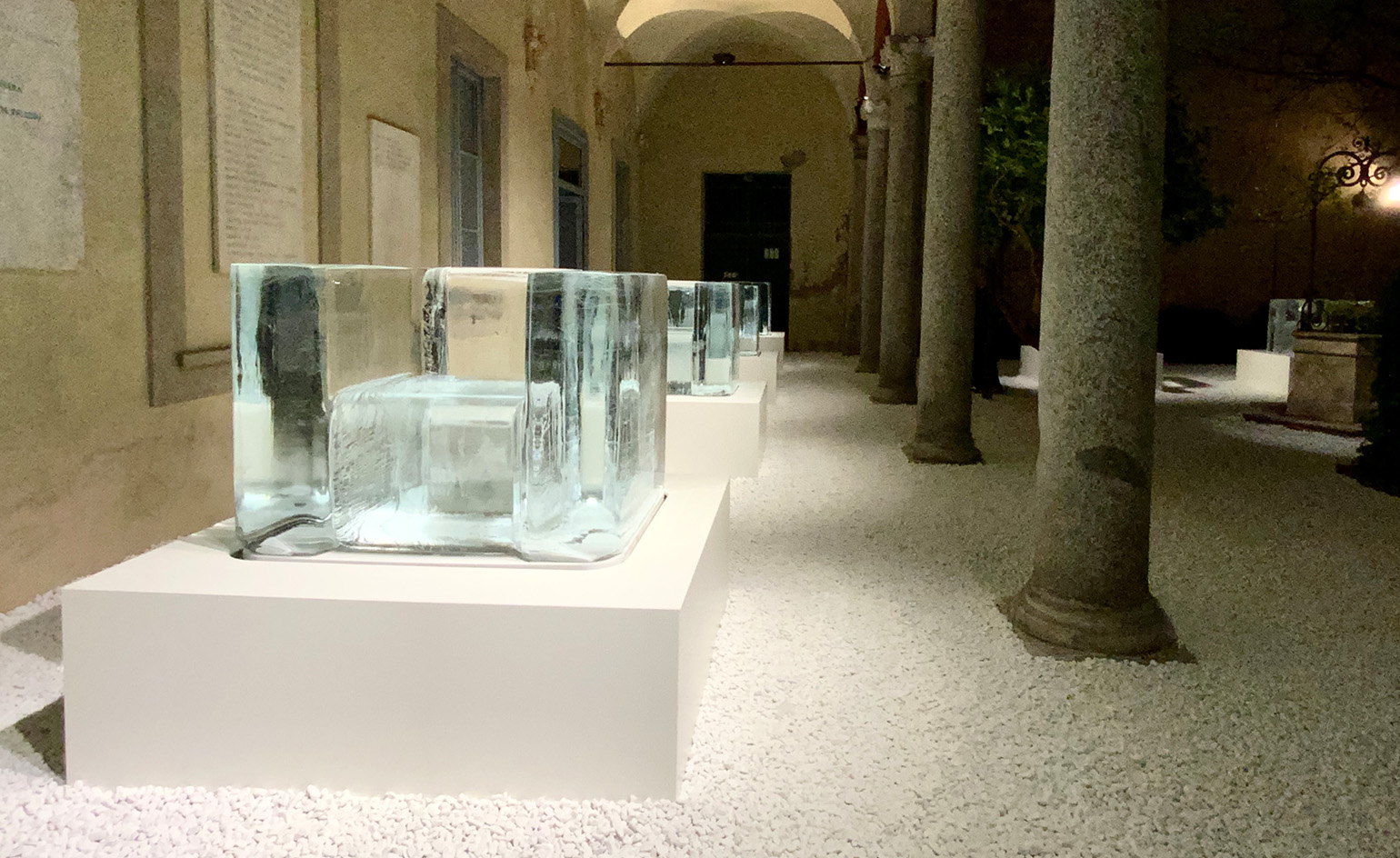 Tokujin Yoshioka’s ephemeral ice furniture is made to melt in Milan
Tokujin Yoshioka’s ephemeral ice furniture is made to melt in MilanTransparent chairs of frozen water slowly disappear during Milan Design Week 2025, in an expression of light by Japanese artist Tokujin Yoshioka
By Danielle Demetriou Published
-
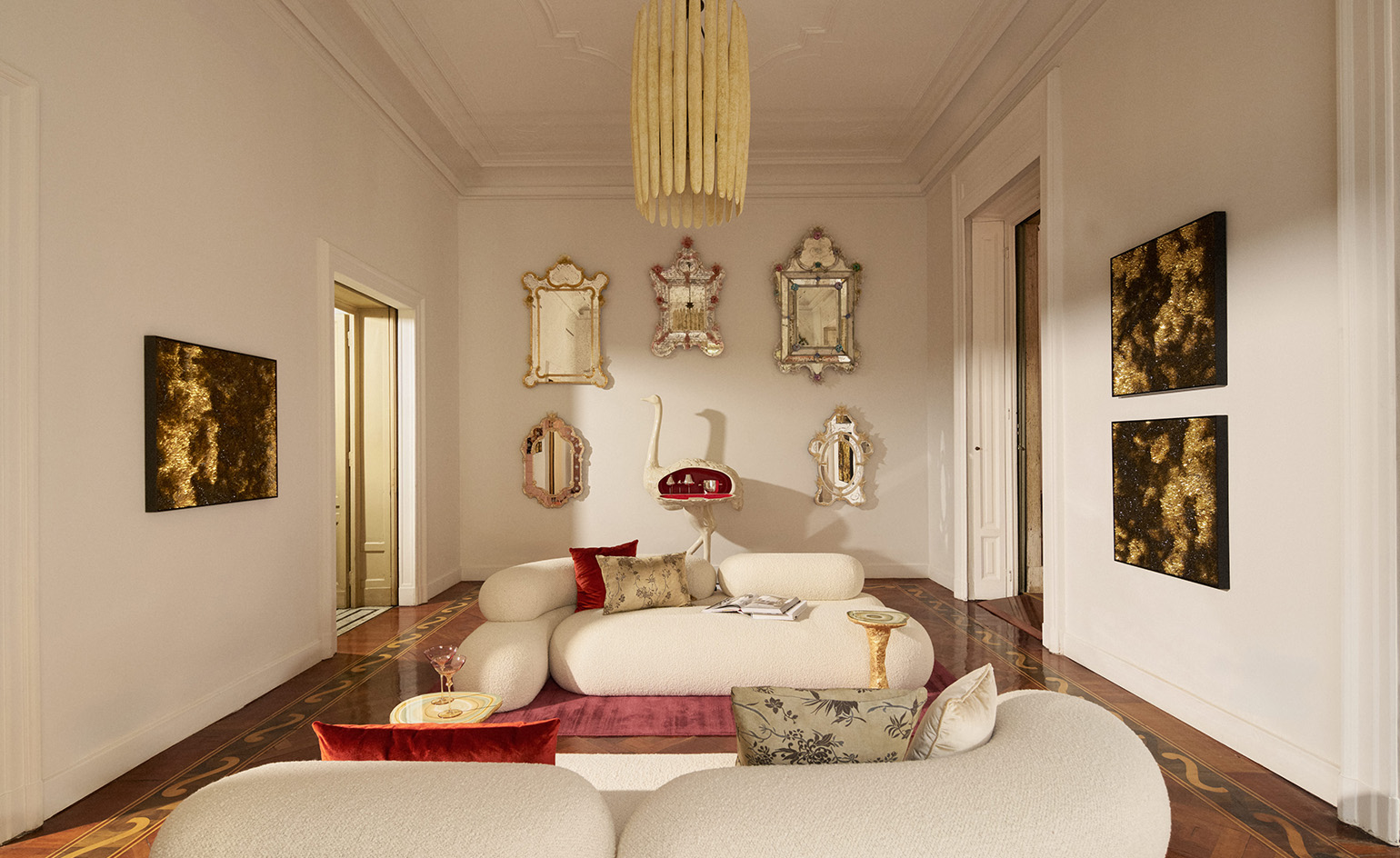 Step inside ‘L’Appartamento’, a grand Milan apartment dedicated to Italian design
Step inside ‘L’Appartamento’, a grand Milan apartment dedicated to Italian designThe Milan Design Week 2025 showcase of online platform Artemest enlists international designers to transform a 19th-century apartment in Palazzo Donizetti
By Ifeoluwa Adedeji Published
-
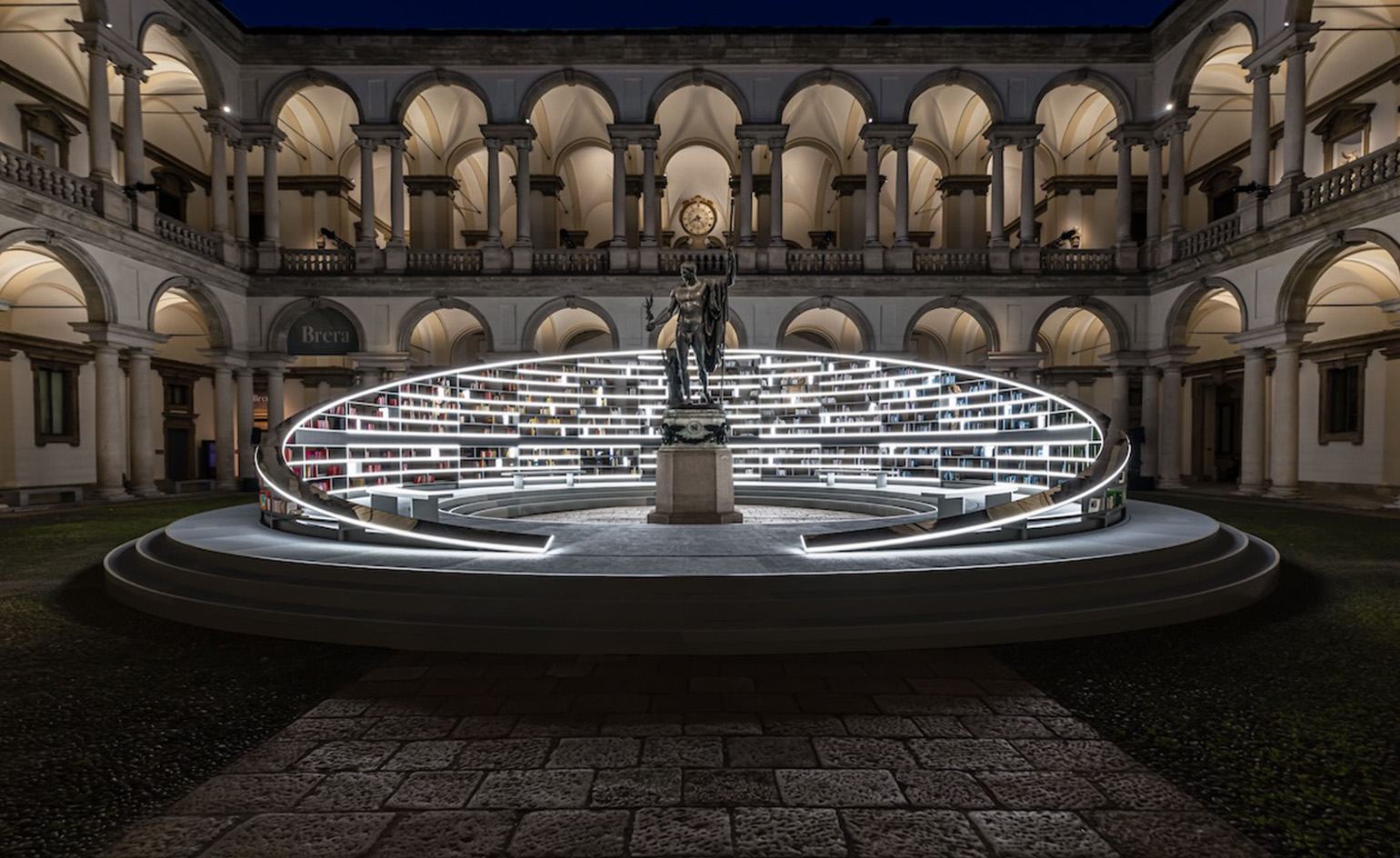 Es Devlin on her luminous new work in Milan: ‘During the evenings, something special happens’
Es Devlin on her luminous new work in Milan: ‘During the evenings, something special happens’The Poetess of Light speaks to Wallpaper* as she debuts one of the most anticipated projects of Milan Design Week – a monumental display within the historic Pinacoteca di Brera
By Cristina Kiran Piotti Published
-
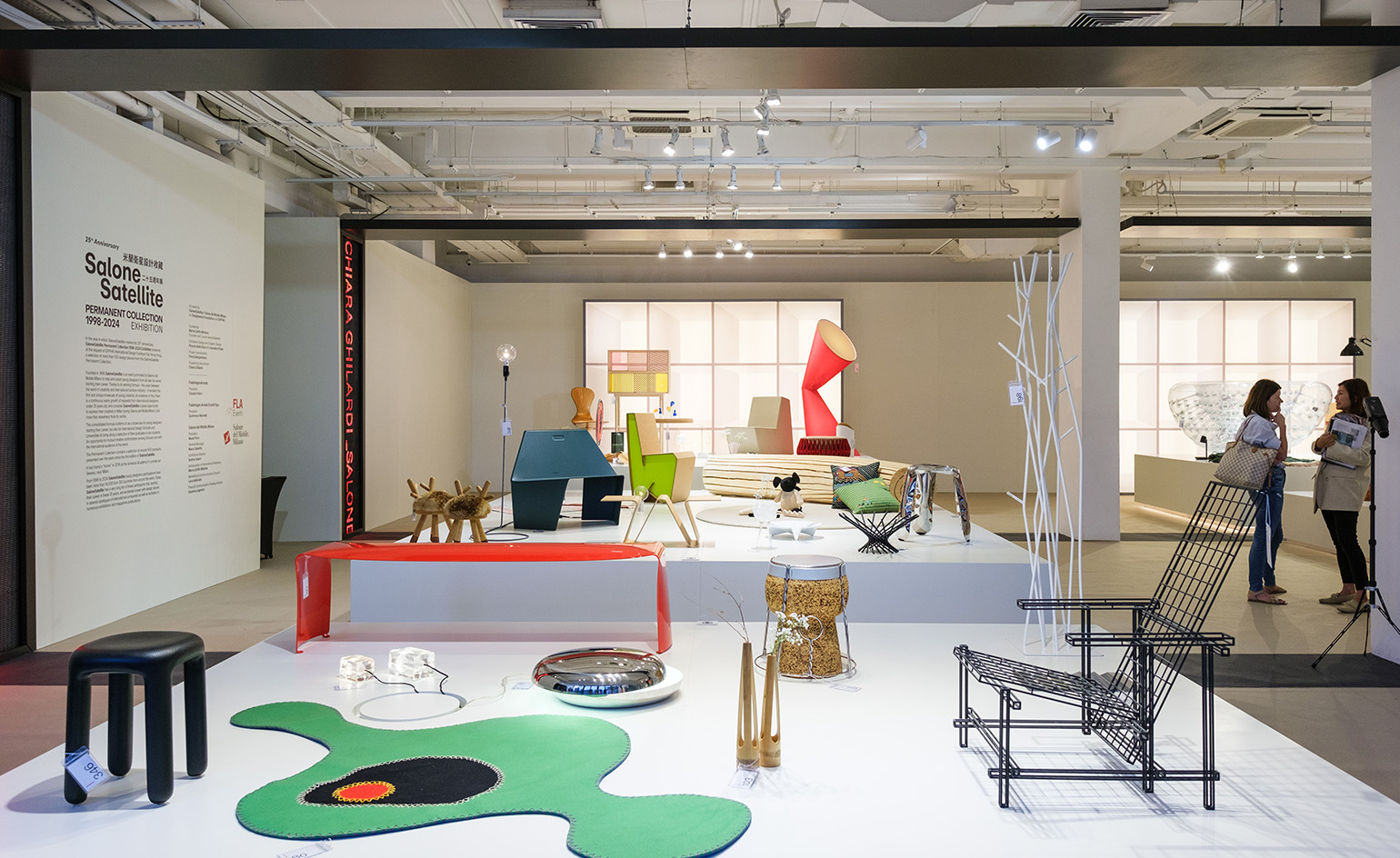 SaloneSatellite celebrates craft across continents at Milan Design Week
SaloneSatellite celebrates craft across continents at Milan Design WeekThe annual showcase for under 35s, SaloneSatellite, reveals how traditional craft can influence design for today and tomorrow
By Ifeoluwa Adedeji Published
-
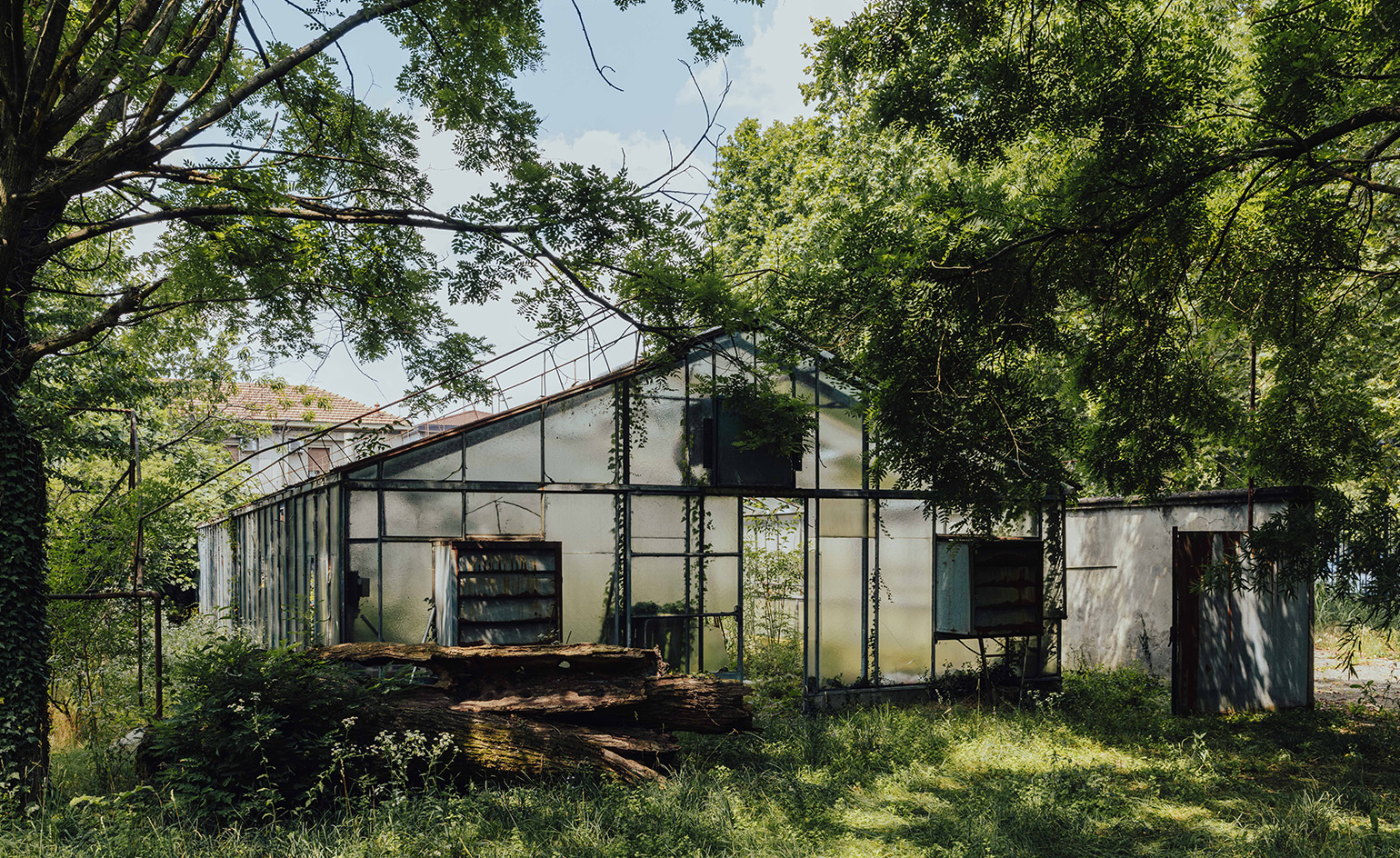 Alcova 2025 makes a case for beauty in urban decay at Milan Design Week
Alcova 2025 makes a case for beauty in urban decay at Milan Design Week‘We don’t see Alcova as an exhibition, but as a snapshot of what design is today,’ the nomadic platform’s founders tell Wallpaper* as it takes up residence in a series of imperfect historic buildings
By Cristina Kiran Piotti Published